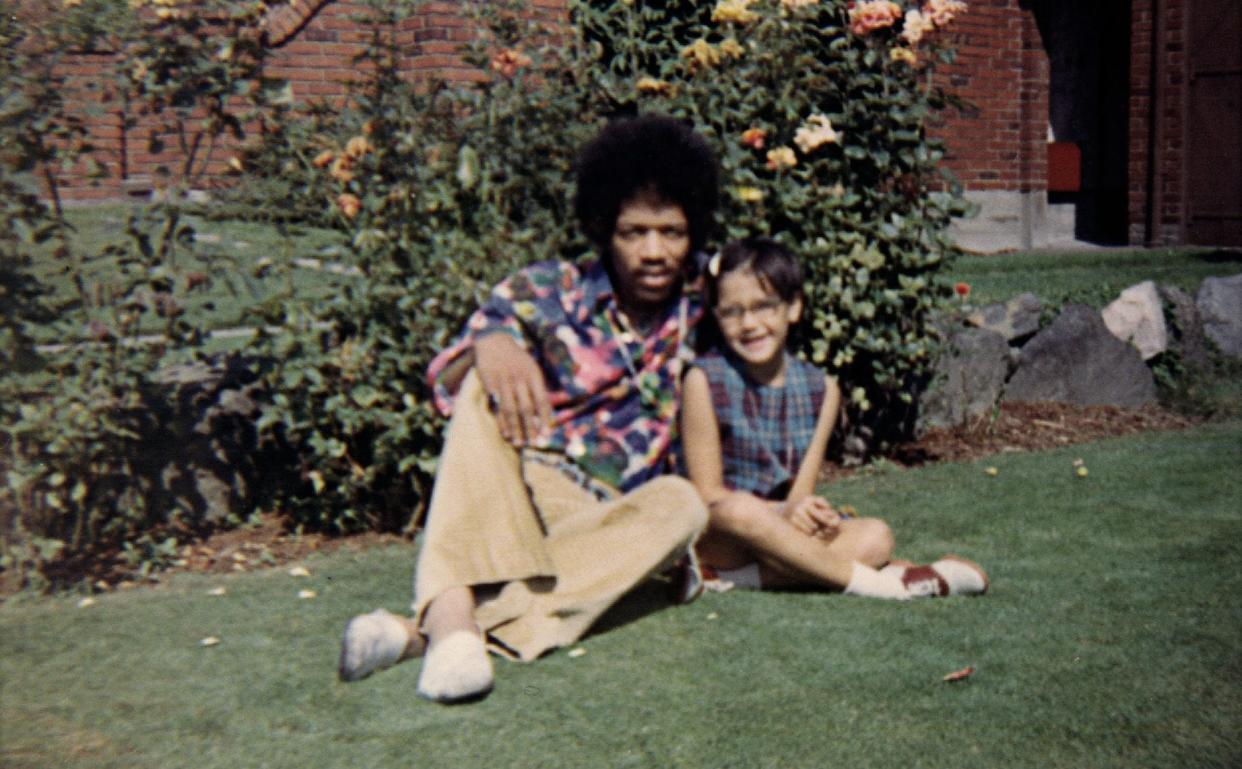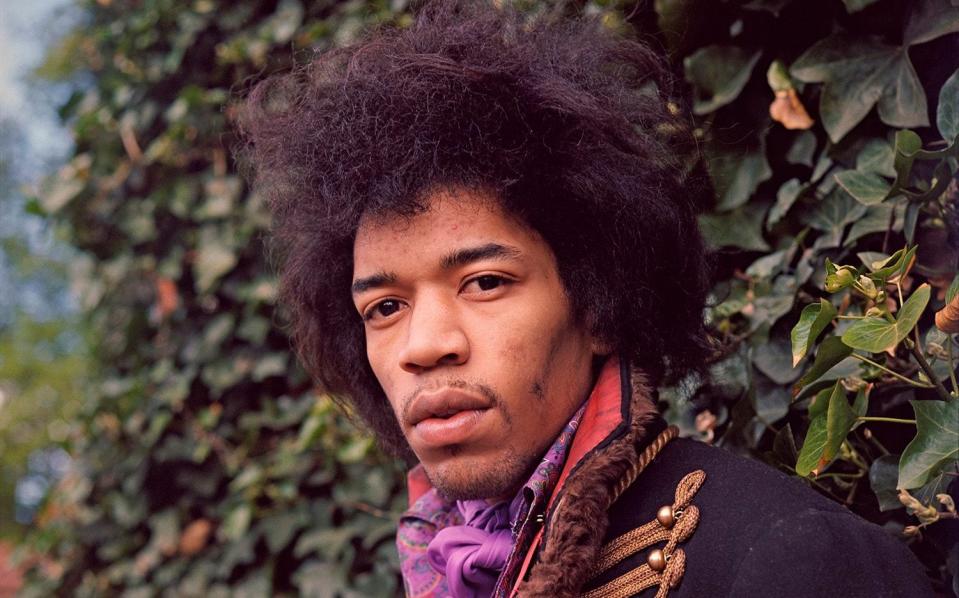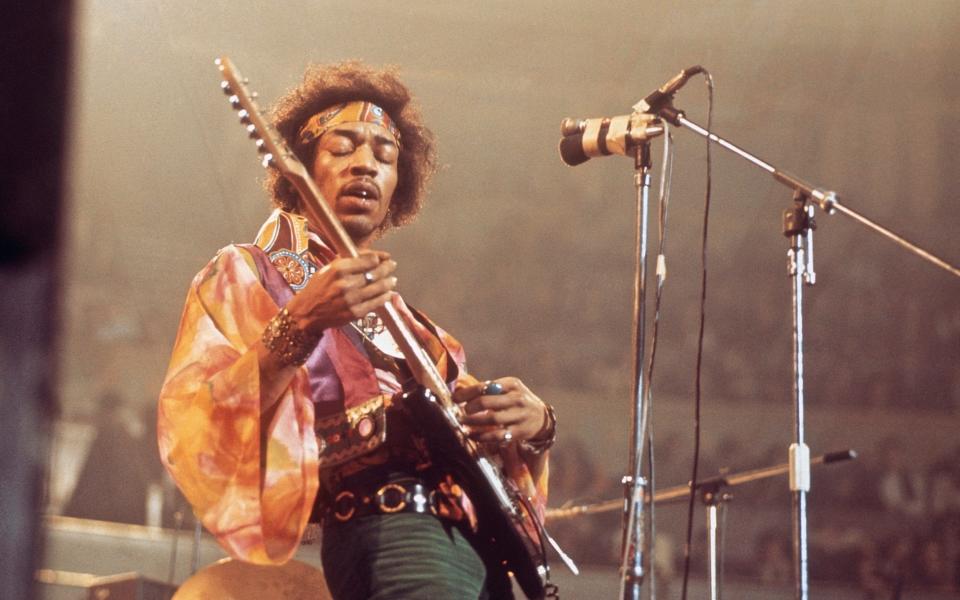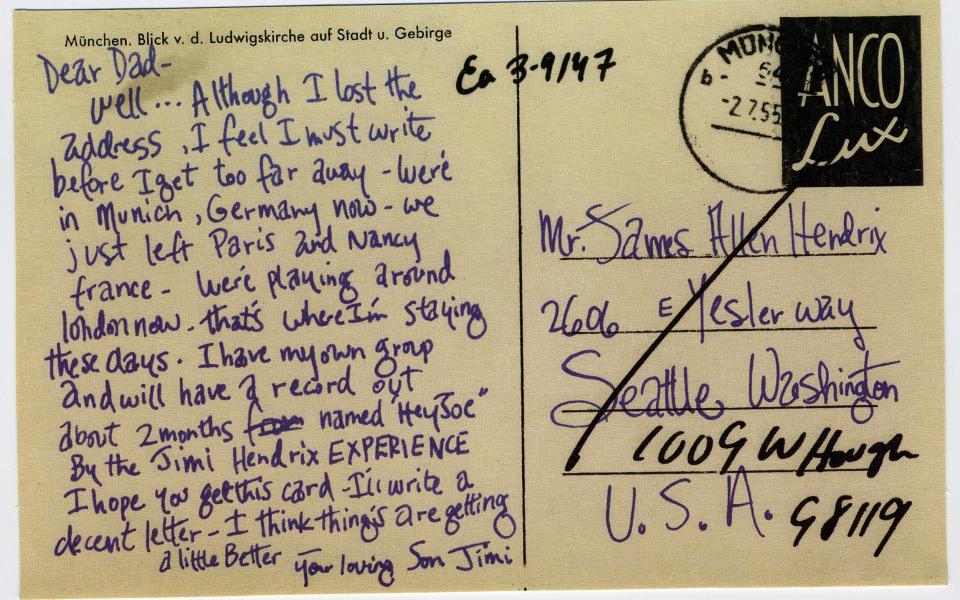Jimi Hendrix’s sister on his mysterious death: ‘The suspects are gone’

When beloved cultural figures die young, it’s inevitable that we imagine what might have happened had they lived. Jimi Hendrix, the dazzling guitarist who died in 1970 aged 27, is a case in point.
His sister, Janie Hendrix, thinks that her big brother would have moved beyond the blues-based psychedelic rock that made him famous as part of the Jimi Hendrix Experience. Before he died, Hendrix told their father, Al, about a “new kind of music” he was working on, Janie explains over Zoom from Seattle.
“He was really wanting a larger band sound,” she says, revealing that Hendrix wanted to add horns and percussion to his trademark sound. He was planning to collaborate with Chicago, the funk-leaning rock band, that would later become yacht rock royalty. Such music would have been cleaner, bigger, groovier, more danceable.
We will, of course, never know, but fans needn’t feel completely bereft. To coincide with what would have been Hendrix’s 80th birthday this weekend, Janie has co-written a lushly produced coffee table book containing hundreds of photos, lyrics, posters, ticket stubs, and tributes from the likes of Paul McCartney and Keith Richards. Janie’s favourite detail: little doodles in the corners of the pages transposed from Hendrix’s own journals. “He really wanted to be an artist before he ever picked up a guitar,” she says.
Exotically dressed and inordinately talented, Hendrix – who found fame when The Animals bassist Chas Chandler saw him play in New York and promised to make him a star – captured the era’s counter-culture zeitgeist. In June 1967, after The Jimi Hendrix Experience (brought together by Chandler) had a top 10 hit with debut single Hey Joe, Hendrix doused his Fender Stratocaster in lighter fluid and set it on fire on stage. The image of him squatting over his blazing instrument, coaxing its flames as Wild Thing reached its clattering crescendo, remains one of the defining images of the Summer of Love.
“He knew he had to do something extraordinary to get people’s attention… A lot of things in the beginning were to get people’s attention and, as he would say, to wake them up. There were a lot of sleepy people,” Janie says. Hendrix became known for these on-stage antics, which included playing guitar with his teeth and performing ear-screeching versions of The Star-Spangled Banner (famously done at Woodstock).
These could prove controversial. She recalls Al, who died in 2002, getting “really tense” as they watched Hendrix play the national anthem at a Seattle concert in 1968. “My dad’s watching a police officer and holding his breath while Jimi’s doing the anthem. Dad exhales after he finishes and says, ‘I thought Jimi would be arrested’.”
Hendrix loved the trappings of fame. But it had its drawbacks. He could grow frustrated that audiences expected the stage show. He also resented being pigeonholed as a rock act. His biggest headache, though, lay in his chaotic business and personal life. Prior to London, Hendrix had signed a US recording contract with a man called Ed Chalpin for one dollar. In return, the musician effectively signed his music rights away. Chalpin baulked when he saw Hendrix make it in Britain and sued him and his new record label (the parties settled in 1968). “Jimi was very shy, he was very quiet. He signed that one-page document which cost him a lot because he just trusted people,” says his sister.

This wasn’t all. Co-managing Hendrix with Chandler was a man called Michael Jeffery, a former Newcastle nightclub owner who’d handled The Animals and had a reputation for sharp business practices. Hendrix also attracted lovers and hangers-on galore, which often led to disarray. “Jimi decided not to say no to people. So he had other people say no for him,” Janie explains. At one point, in a quest for stability, Hendrix asked his father to manage him, Janie says (it didn’t happen). Business was not his forte.
“Like a lot of artists, it’s about their art and their music, and that’s all they want to do. They don’t want to be bothered with the business aspect,” she says. Janie was only nine when Hendrix died (her mother Ayako married Al after he’d divorced Hendrix’s mother).
But she has vivid memories. When Hendrix visited Seattle in 1968 she remembers the excitement of him stepping off the plane. “He had all this garb on, his hat and feathers and jacket. I remember him saying about his turquoise belt, ‘Dad, guess how much this belt cost?’ It was $700. That was a lot. I think our house cost $30,000. He was really proud he was able to buy these nice things because growing up, it was a very poor time,” she says. Clothes featured constantly on that visit.

Janie recalls watching her brother perform from the back of the stage. “During the last concert of that tour, when Jimi bent down his trousers ripped. Nobody knew except for us. He just took his jacket off, wrapped it around him and kept playing. And then my mum fixed his trousers later.”
Janie, is also the chief executive of Experience Hendrix, the company that manages Jimi’s estate. Unreleased music is in the pipeline. A live Experience album, recorded at the Los Angeles Forum in 1969, was released last week. A Royal Albert Hall recording may also see the light of day, while there are “two more things” that Janie can’t talk about. At a time when vintage artists’ song catalogues are big business – the likes of Bob Dylan and the estate of David Bowie have sold their songs to publishing companies for hundreds of millions of dollars in recent years – Janie confirms she has received approaches for the Hendrix catalogue.
“I actually, jokingly, told someone who said, ‘Are you guys considering selling?’ and I go, ‘Do you have a billion dollars?’ And then he goes” – she makes a sputtering coughing sound – “...and I go, ‘No, I am not considering selling’.”
As with many successful musicians from the era, Hendrix’s estate has been mired in legal rows. The musician died without a will and it took his father Al until the 1990s to take full legal control of his son’s copyright. When Al died, Janie took over, leading to clashes with other members of the Hendrix family. Legal issues rumble on.
Redding and Mitchell’s estates are currently involved in legal action against the Hendrix estate and its distribution partner Sony Music over disputed rights and royalties. The case is “still very much ongoing”, the lawyer for Redding and Mitchell’s estates tells me. And last year, Hendrix’s brother Leon and his niece Tina were found in contempt of court by a New York judge after violating a ruling that forbids them from using the Hendrix name commercially. It seems that Hendrix’s affairs are as messy in death as they were during his life.

Hendrix was found dead on Sep 18 1970 in the Notting Hill apartment rented by his erstwhile lover, the German artist Monika Dannemann. He’d choked on his own vomit while intoxicated on “downer” pills. Large quantities of red wine were found in his lungs. Although the physiological cause of Hendrix’s death was clear, a coroner found it impossible to establish precisely how this happened.
Rumours immediately surfaced that far from this being a tragic accident, Hendrix had been murdered. The finger of suspicion was pointed in all directions: towards the Mafia, the FBI, Dannemann (who’d found his body), and even members of Newcastle’s gangland connected to Jeffery. Intriguingly, Janie doesn’t rule any theory out. “Anything could have happened. My dad used to always say, ‘never say never about anyone’. The bad part was that some of these people were actually friends. Or at least we thought they were and they would come and stay at our house,” she says.
Jeffery died in 1973 while Dannemann passed away in 1996, although Janie stresses that she’s not referring to anyone specifically. “Even though there’s no statute of limitations on murder, they’re all gone. The suspects are gone. So, you know, what do we prove?” Janie asks before reeling off a list of unanswered questions. It clearly still hurts. What, she asks, precisely happened in that last 24 hours? She goes into granular detail. Why was a fish sandwich that Jimi was said to have eaten not found in his system? “I just hope that maybe one day we’ll find what really happened,” she says.
But rather than focus on his death, Janie would rather celebrate his life. “There are so many young artists that are inspired by Jimi,” she says. This new book certainly captures Hendrix’s explosive energy. Like that famous Fender Stratocaster on the Monterey stage, his is a legacy that burns bright.
'Jimi: The Official 80th Birthday Anniversary Edition' is published by Chronicle Chroma on November 24. The Jimi Hendrix Experience - Los Angeles Forum: April 26, 1969 is out now on Sony

 Yahoo News
Yahoo News 
